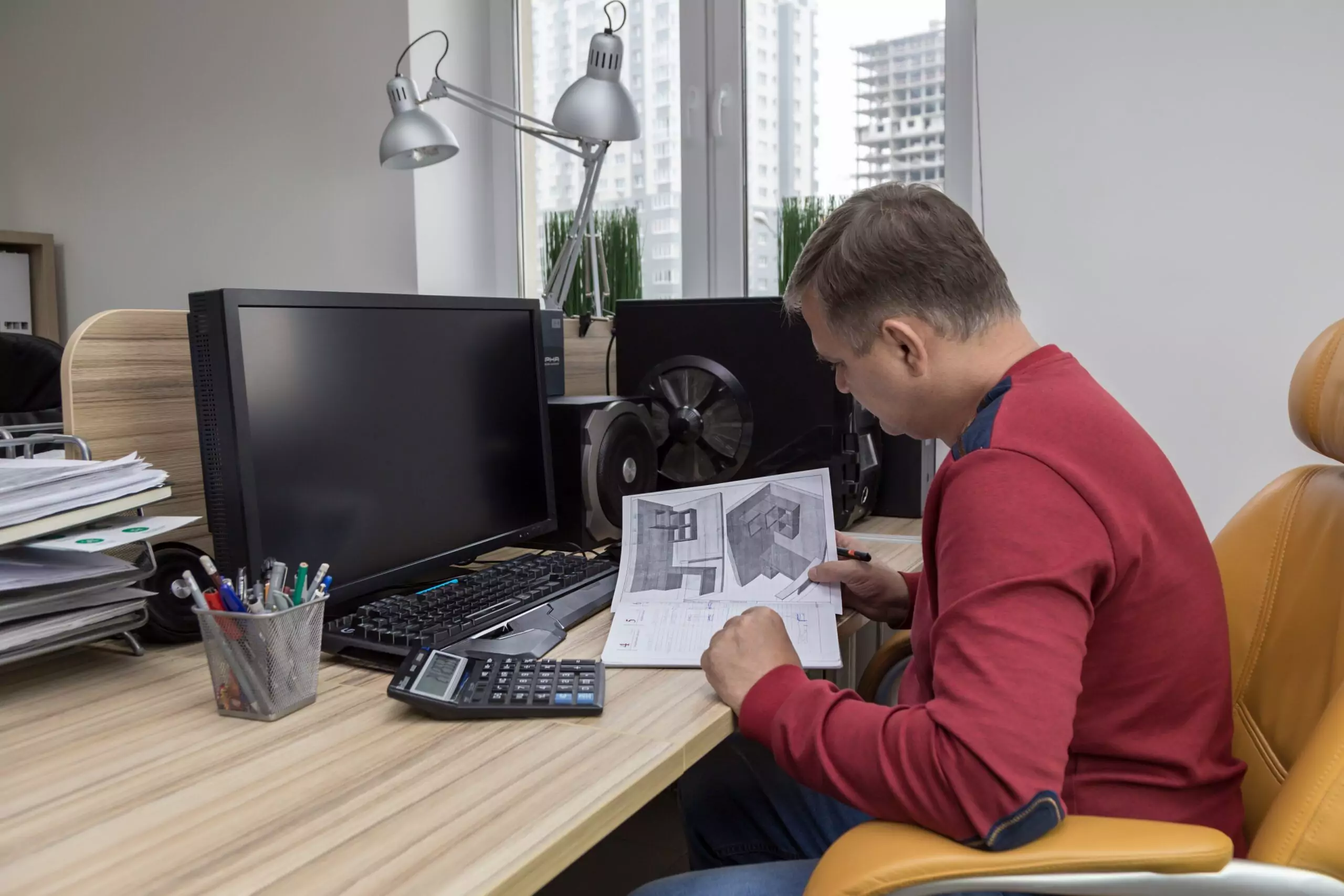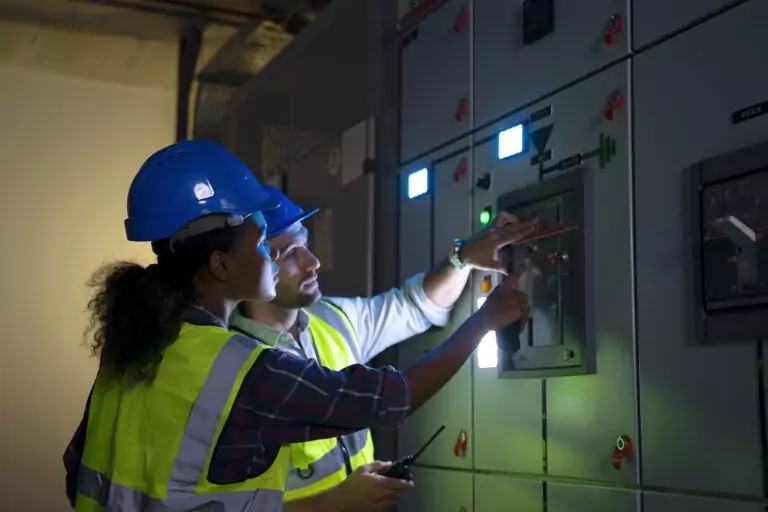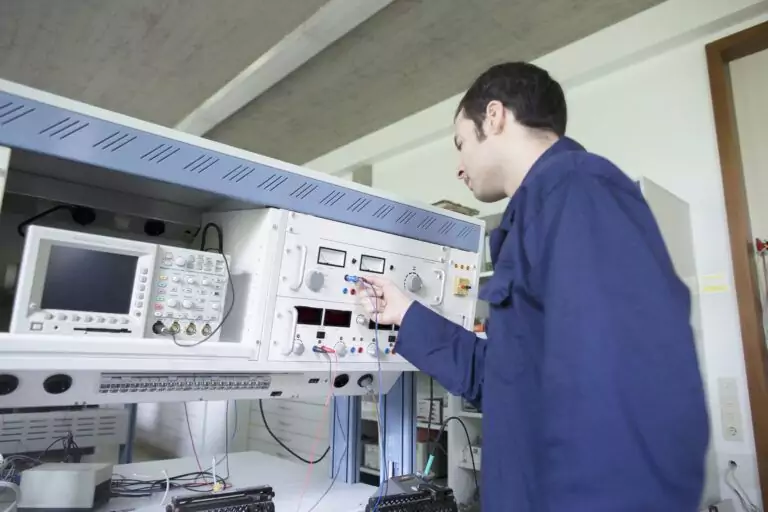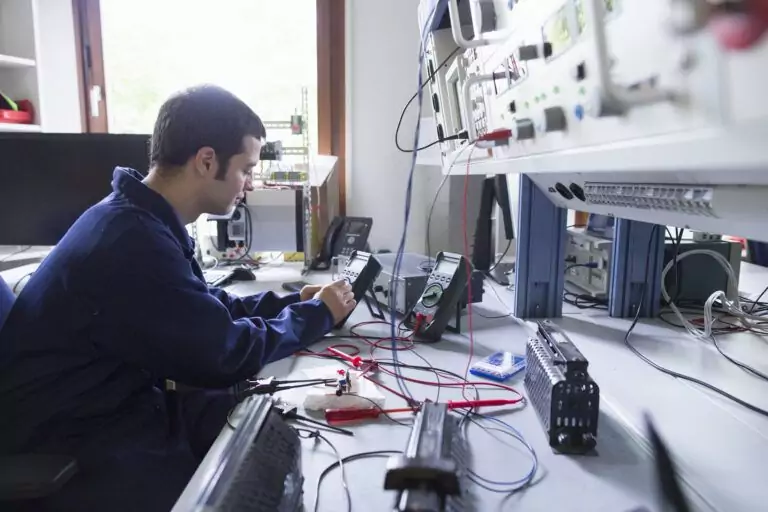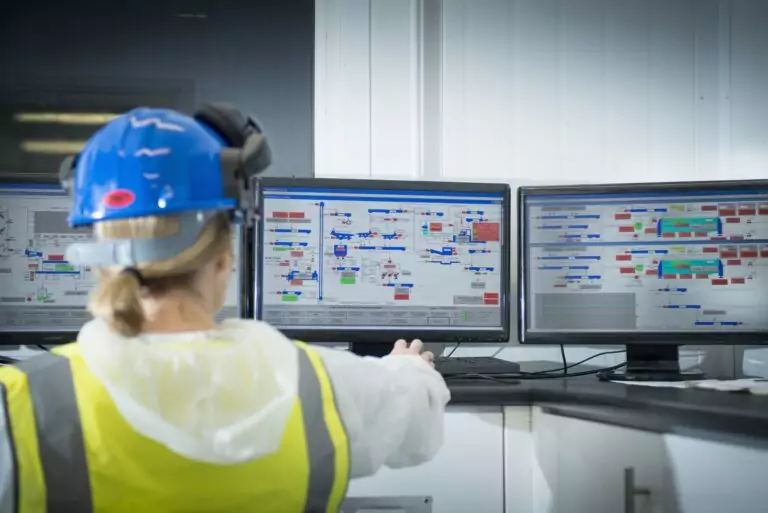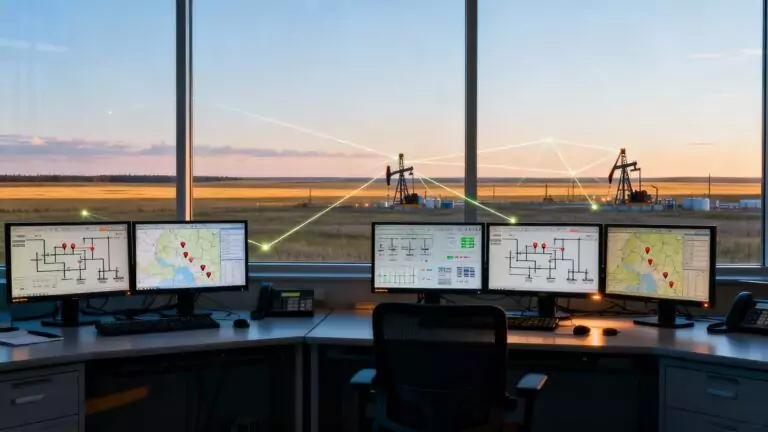What should be in a mechanical engineering portfolio? A strong mechanical engineering portfolio includes five essential elements: a focused professional introduction (150-250 words) stating your specialisation and experience, technical skills section listing software proficiency with years of experience, 3-7 well-documented mechanical engineering projects showing variety across design, analysis, and manufacturing work, high-quality CAD drawings and renderings with multiple views, and clear explanations of your specific role and contributions on team projects. Additional elements include a downloadable CV, certifications, and contact information. Quality matters more than quantity; three thoroughly documented projects outperform seven superficial examples.
Your transcript shows solid marks. Your CV lists software skills. But when you apply for mechanical engineering positions, something’s often missing.
Hiring managers review dozens of CVs claiming proficiency in SolidWorks, AutoCAD, or CATIA without tangible evidence. A visual engineering project portfolio changes that dynamic. Concrete examples of your technical work stand out. Employers see actual design, analysis, and manufacturing projects you’ve completed. They understand what you can actually do.
This matters most when competing for design engineer roles, consulting positions, or specialised work in renewable energy, automation, aerospace, or advanced manufacturing. Companies want tangible, visual evidence that you can deliver projects from concept through completion.
The challenge is knowing what project types and documentation formats to include while protecting confidential information. Which projects show the right skills? What platform works best?
Disclaimer: Company-specific details and proprietary information should never be included without explicit written permission. Portfolio platforms, pricing, and features change frequently. All financial information represents 2025 estimates and should be verified with vendors. Individual circumstances vary regarding confidentiality obligations, employer policies, and professional requirements. Always verify current information before making portfolio decisions.
When Mechanical Engineers Actually Need a Portfolio
Not every mechanical engineering job requires a portfolio. Understanding when portfolios provide the most value helps you invest time strategically.
Career Situations Where Portfolios Provide Value
Consulting firms regularly review portfolios, particularly integrated, multidisciplinary engineering companies. They want proof that you can handle diverse projects across multiple industries and technical challenges. Client-facing work requires strong technical communication skills that translate complex engineering concepts for non-technical stakeholders. Your portfolio shows both technical skills and presentation ability.
Design engineer positions at product development companies typically expect portfolio documentation showing CAD modelling capabilities, design methodology, prototype development, and testing validation.
Transitioning between industries creates portfolio value by documenting transferable engineering skills and expertise. Moving from automotive manufacturing to renewable energy? Show transferable skills, including thermodynamics expertise, fluid mechanics applications, and performance optimisation. Make connections explicit between the previous and target industries.
Graduate school applications benefit from portfolios showing research capabilities and technical depth. Strong project documentation, including detailed descriptions, clear methodologies, and quantitative results, strengthens applications beyond academic transcripts.
Freelancing requires portfolios as primary marketing tools for independent consulting engineers or when launching an engineering consulting business. Clients typically want visual evidence beyond CVs alone.
Industries That Typically Expect Portfolio Documentation
Industrial design firms and product development organisations often treat portfolios as standard application requirements. These fields are inherently visual, with success measured through physical products requiring strong visual communication.
Automation and robotics engineering increasingly benefit from portfolios showing mechanical design of end effectors, robot cell layouts, and safety system integration. Visual documentation, including photographs of installed systems, CAD assembly models, and operational videos, helps explain what you’ve built.
Renewable energy systems design benefits from portfolio documentation showing thermodynamic analysis, heat transfer calculations, and performance optimisation methodologies. These projects photograph well with large-scale installations and reflect a modern engineering focus on sustainability.
Vista Projects and similar consulting engineering firms serving external clients find portfolios particularly valuable for showcasing the breadth of their experience and successful project delivery across various industries and technical specialisations.
Essential Elements Every Engineering Portfolio Needs
How to create an engineering portfolio? Follow this six-step process: (1) Select your platform based on needs and budget, allowing 1-2 days maximum for decision, (2) Write focused professional introduction of 150-250 words stating specialisation and experience, (3) Create scannable technical skills section grouped by category with proficiency levels, (4) Document 3-7 strong projects using consistent format including problem, approach, tools, and results, (5) Prepare high-quality images at 1920×1080 minimum resolution with multiple views and annotations, (6) Review for confidentiality compliance, removing all proprietary information without explicit permission. Most engineers complete their initial portfolio in 15-25 hours spread over 2-3 weeks.
Certain elements are essential regardless of career stage, industry specialisation, or target employer type.
Your Professional Introduction and Capabilities
Start with a focused bio of 150-250 words positioned prominently. Explain your mechanical engineering expertise briefly, identifying your specialisation areas, years of experience, and technical focus. Keep introductions concise; recruiters typically spend a limited amount of time scanning before deciding whether to review further.
Highlight technical specialisations clearly. Thermal systems design and analysis. Mechanical design of machine elements and assemblies. Manufacturing processes and production optimisation. Be specific about your strengths.
Include software proficiencies prominently: AutoCAD, SolidWorks, CATIA, ANSYS, MATLAB, plus years of experience and proficiency levels. Distinguishing expertise from basic familiarity provides valuable context. Five years of SolidWorks experience differ significantly from six months.
Professional Engineer status or Engineer-in-Training designation matters in Canada. Include licensing progress, stating current status, provincial regulator affiliation, and expected licensing completion date for engineers in training.
Contact information should be clearly visible, including your email address, LinkedIn profile, and phone number. Make connecting easy. In digital portfolios, make contact information clickable.
Technical Skills and Software Proficiency
Create a skills section that’s scannable, allowing hiring managers to quickly identify relevant capabilities. Group by category for clarity: “CAD and Design Software,” “Analysis and Simulation Tools,” and “Industry-Specific Software.”
CAD software deserves its own subsection, listing specific applications with details, including years used, project types completed, and specific modules or advanced features mastered. “SolidWorks with 5 years of experience in surface modelling and FEA integration” instantly provides more context than simply “SolidWorks.”
Analysis tools need documentation as specialised capabilities. FEA software, including ANSYS Mechanical or SolidWorks Simulation. CFD programmes such as ANSYS Fluent or OpenFOAM. MATLAB for calculations. These separate experienced engineers from beginners.
Years of experience with each tool provides important context. Be honest about proficiency; interviews typically reveal exaggeration through technical questions or tests.
CV and Certifications
Include a downloadable CV clearly labelled with a button or hyperlink in PDF format. Keep it current, updating it each time you update the portfolio.
Academic credentials document provides educational qualifications: degree information, the university attended (noting if CEAB-accredited Canadian institution), and graduation year.
Professional certifications beyond academic degrees should be documented. Six Sigma training, project management certifications, safety credentials, and continuing education courses demonstrate a commitment to professional development.
How to Document Individual Engineering Projects
A consistent project documentation structure helps portfolios communicate effectively. A predictable structure helps viewers process information efficiently.
Every project requires a clear and descriptive title. “HVAC System Optimisation for Manufacturing Facility” works better than “Project 3.” Generic titles provide insufficient context.
Timeframe provides context. Academic projects note which term or year. Professional work lists duration. Recent work typically receives priority in portfolio organisation.
Your role and contribution must be explicit, particularly for team projects. “Responsible for thermal analysis and heat exchanger selection” tells viewers exactly what you did. Specify your actual work clearly.
The problem statement or objective sets up the project. What challenge existed? What goal drove the work? Context helps employers understand the significance.
Technical approach and methodology show your engineering thinking process. What methods did you use? Why those methods? This reveals problem-solving approaches.
Tools and software are used to document your technical capabilities with specific application details. Don’t just list software, explain how you used it. “Performed CFD analysis using ANSYS Fluent with k-epsilon turbulence model” shows competence levels better than “Used ANSYS.”
Key deliverables summarise what you produced, including drawings, reports, prototypes, and test results. Employers care about tangible outputs.
Results and impact close the loop by showing project outcomes. What happened? Did performance improve? By how much? Use qualifying language for confidential professional work: “improved efficiency by 15-20%” when exact figures are proprietary. Quantify results when possible.
Presenting Technical Drawings and CAD Models
Engineering drawings need careful preparation. Clean up drawings, removing proprietary specifications, confidential dimensions, and client identification before inclusion.
Isometric views, which show three-dimensional objects, help viewers understand 3D geometry better than orthographic projections alone. Combine multiple views to achieve a complete geometric definition.
Assembly renderings as 3D CAD models work well with photorealistic materials and lighting, showing how components fit together. Photorealistic rendering impresses viewers, though line drawings sometimes communicate better for technical audiences. Use both strategically.
Exploded views with components separated show design complexity and assembly sequence, particularly valuable for complex mechanisms.
Image quality matters for professional presentations. Save CAD screenshots at high resolution, 1920×1080 pixels minimum for web display or 300 DPI for print-resolution images. Balance quality against file size, keeping individual images under 500 KB to 1 MB typically.
Annotations added in CAD software highlight important design features, critical dimensions, material selections, and tolerances where precision matters.
Protecting Confidential and Proprietary Information
Understanding confidentiality obligations protects your professional reputation and legal standing.
Understanding Confidentiality Obligations
Professional work completed for employers typically includes confidentiality agreements that prohibit the disclosure of technical information, client identities, and project specifics without explicit written permission. Respect these obligations; violations can result in lawsuits, termination of employment, and damage to your professional reputation.
Safe Content Strategies
Remove client names from all documentation, replacing specific company identities with generic descriptions like “automotive manufacturer” or “energy company.”
Generalise project descriptions using industry-standard terminology. “Industrial facility” instead of specific facility names. Specific locations can reveal clients.
Focus on your methodology rather than specific details, emphasising analytical approaches, problem-solving process, and general design principles applied. How you solved problems matters as much as proprietary specifications.
Change non-critical identifying details strategically. Modify non-critical specifications without misrepresenting your engineering work, slightly alter dimensions or flow rates that don’t affect demonstrated capability.
When to Obtain Permission
Obtain written permission when possible, formally requesting approval from supervisors or HR departments. Some employers allow showcasing work with approval, particularly for public projects already disclosed through marketing materials. Document approval carefully; written approval (including email) provides protection.
Academic and personal projects avoid these issues. University coursework and self-initiated engineering work generally don’t involve employment confidentiality obligations. Students can emphasise these unrestricted projects freely.
When uncertain, exclude the project. Three clean projects outweigh seven questionable ones, risking legal issues.
Specific Project Types to Include
What is the best platform for an engineering portfolio? Platform choice depends on your career stage and needs: Google Sites or free Wix for students and early-career engineers, Squarespace (£10-15/month) or custom WordPress for mid-career professionals wanting a polished presentation, and a personal domain with professional hosting (£30-80/month) for senior engineers and consultants. PDF portfolios (created in PowerPoint or InDesign) work universally for ATS systems and email attachments. LinkedIn’s project section provides visibility where recruiters already search. Most engineers benefit from both a web portfolio (for showcase) and PDF version (for applications). Mobile responsiveness is essential; studies suggest the majority of initial application reviews occur on mobile devices.
Different project types show different capabilities. Strong portfolios include a variety across project types, though specialisation balance matters.
Design and product development projects document work from initial concept through completion, showing evolution through design iterations. Include sketches from the ideation phase, detailed CAD models and assembly structures, prototype development and testing, and final product documentation, including manufacturing drawings.
Analysis and simulation work show problem setup, meshing strategies, boundary conditions, and results interpretation. Finite element analysis, computational fluid dynamics, and thermal analysis all transfer across industries. Simulation work needs a validation discussion showing engineering judgment, comparison with hand calculations, experimental data, or industry standards.
Manufacturing and process engineering projects show production system design, process optimisation with measurable improvements, and automation implementation, including robotic integration and control systems.
Sustainable and green energy projects reflect the modern engineering focus on renewable energy system design, energy efficiency improvements, and emerging applications, such as carbon capture systems, showcasing cutting-edge work.
Platform Selection for Engineering Portfolios
Platform selection depends on your needs, technical comfort, and budget. Make decisions efficiently; extended deliberation delays portfolio completion.
Web portfolios provide shareable URLs for job applications, CVs, and LinkedIn profiles. Mobile viewing matters significantly; responsive design automatically adapts to different screen sizes, allowing recruiters to review applications on phones with ease.
Embedding videos works easily online, showing robots operating, machinery functioning, and prototype testing. Video proves functionality beyond static images.
Platform options include Wix, with its drag-and-drop editing, Squarespace, which emphasises design aesthetics, and Google Sites, offering free hosting. Personal domain websites offer maximum control. Free options work well for students and early-career engineers. Consider upgrades as the career progresses.
PDF portfolios work universally with applicant tracking systems and email attachments. Some systems handle PDFs better than web links. PDFs enable offline viewing in manufacturing facilities with restricted internet access or secure engineering offices.
Create professional PDFs from PowerPoint or Adobe InDesign using slide-based layouts exported as high-resolution PDF documents (300 DPI image resolution minimum).
LinkedIn portfolio integration through the project section allows showcasing work directly on your profile with project titles, descriptions, skills tags, and attached media visible to profile visitors. Recruiters search LinkedIn regularly; visibility where they already look provides a distinct advantage.
Building Your Portfolio Strategically
Select your platform first, making decisions within 1-2 days. Extended research delays action.
Gather project materials systematically, including photos, CAD files, and reports. Organisation before creation saves time.
Start with your three strongest projects, documenting these thoroughly. Allocate 2-3 hours per project, typically. Complete these initial three fully before adding more. Quality surpasses quantity.
Update portfolio regularly, adding new projects quarterly or semi-annually. Remove weaker examples as better ones accumulate. Portfolios require ongoing maintenance as living documents. Outdated portfolios suggest discontinued learning.
Modern engineering increasingly requires multi-disciplinary capabilities, including system integration work and digital transformation. Vista Projects and similar integrated multidisciplinary engineering firms value engineers who show project experience spanning multiple industries and collaborative work across disciplines.
Your portfolio ultimately serves as career documentation and a marketing tool. Invest time building it properly, and the return compounds throughout your professional life as you pursue new opportunities, advance your career, and expand your professional network.
Disclaimer: This article provides general guidance for informational purposes only and should not be considered professional or legal advice. Always obtain explicit written permission before including any proprietary work or confidential information in your portfolio. Consult your employer’s confidentiality policies and legal counsel when uncertain about including specific projects. Engineering regulations, portfolio platform features, pricing structures, and industry standards change frequently. Verify all information with current official sources before making decisions. Individual circumstances vary significantly regarding confidentiality obligations, employer policies, and professional requirements. Violating confidentiality agreements or proprietary information protections can result in serious legal consequences and permanent career damage. When in doubt about including specific project details, err on the side of caution and exclude potentially problematic content. Platform costs represent 2025 estimates and vary by region, subscription tier, and vendor. Always verify current pricing and features directly with platform providers.
